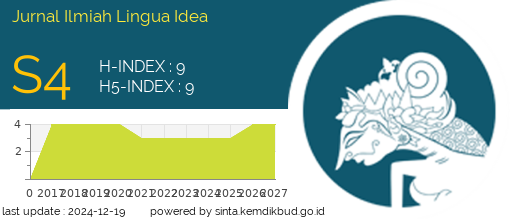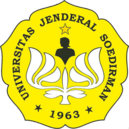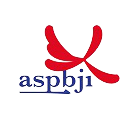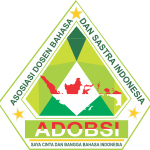INTERFERENSI MORFOLOGI BAHASA INDONESIA KE DALAM PEMAKAIAN BAHASA JAWA DI MEDIA MASSA
Abstract
In terms of language, every people influence each other. Polling other language elements will give the advantage that it can enrich the language concerned. language of the recipient will be harmed if the inclusion of other languages impacts disrupt the structure so that in case of deviation usage rules or cause symptoms of interference. The greater the difference between the elements of the first language and a second language, the greater the problems in the process of learning the language. Can be implied that the fault in the process of learning a second language can be explained as a symptom interference (Weinrich, 1964: 1). The research method in this research is descriptive method to retrieve data from a magazine spreaders spirit. Data analysis refers to the qualitative problem-solving approach is distributional. Interference in the field of grammatical (grammar) in particular this morphology occurs when bilingual identify morpheme, class morpheme or relationship grammatical system second language with morpheme, class morpheme or relationship grammatical system first language and use it in tuturannya in a second language, and vice versa (Rusyana, 1975: 68). Interference in the field of Indonesian morphology in the use of the Java language is seen in the morphology process which includes the process of affixation, reduplication and compounding processes. This morphological interference includes interference prefixes di-, ter-, ke-, N-, uncle and dear; suffix -an interference; konfiks interference include to - / - s, N / -i, N - / - ake, in the - / - i, in the - / - ake, pa - / - s, and ka - / - late; and interference affixes join Men- (per-ake) and di- (per - / - ake). In addition affixation process, interference in morphology field also includes the full reduplication reduplication form and reduplication with the addition of the suffix -an and suffix -ne, but it also contained a compound interference. Interference grammatical morphology of Indonesian particularly into the use of the Java language is relatively rare compared with the interference of the Java language into Indonesian. Thus, this means that in the field of Java language grammatically more stable than Indonesian. It is caused by a factor pride Java native speakers of the language is still high.
Authors who publish with Jurnal Ilmiah Lingua Idea agree to the following terms:
- Authors retain copyright and grant the journal right of first publication with the work simultaneously licensed under a Creative Commons Attribution License (CC BY-SA 4.0) that allows others to share the work with an acknowledgment of the work's authorship and initial publication in this journal.
- Authors are able to enter into separate, additional contractual arrangements for the non-exclusive distribution of the journal's published version of the work (e.g., post it to an institutional repository or publish it in a book), with an acknowledgment of its initial publication in this journal.
- Authors are permitted and encouraged to post their work online (e.g., in institutional repositories or on their website) prior to and during the submission process, as it can lead to productive exchanges, as well as earlier and greater citation of published work.





















.png)




_.png)


